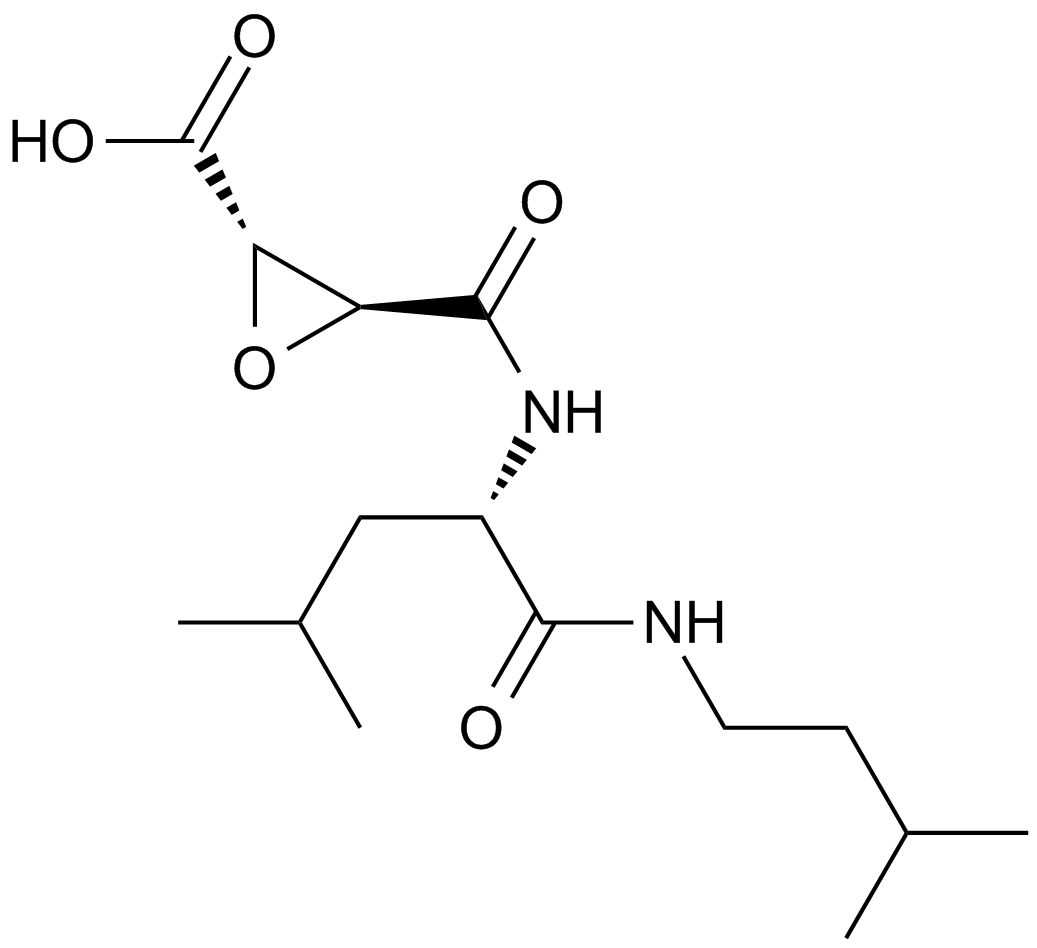E-64-c (Synonyms: Loxistatin Acid, NSC 694279) |
| Catalog No.GC16505 |
An active metabolite of E-64d
Products are for research use only. Not for human use. We do not sell to patients.

Cas No.: 76684-89-4
Sample solution is provided at 25 µL, 10mM.
E-64-c, which is also known as Ep-475, is an analog of E-64 and inhibitor of cysteine proteinases. [1]
The cysteine proteinases, of which Cathepsins B and H and cathepsin L exist in mammals, contain an essential highly reactive thiol group, and therefore are inhibited by thiol-blocking reagents such as iodoacetate and mercuribenzoate. E-64-c showed promise of acting as class-specific inhibitors for the cysteine proteinases. X-ray diffraction shows that E-64-c binds to papain through a thioether covalent bond.[1]
E-64-c, which is an analog of E-64, has proved to be substantially more reactive than E-64 with cathepsins B and L. Cathepsins B and H from human liver and rat cathepsin L were used to measure the rate constants of inhibition of E-64-c, which indicated the rate constants of inactivation of cathepsins B, H and L were 298000, 2018, 206000 M-1 s-1 , respectively[2].
E-64-c was injected subcutaneously, in various doses, daily for 80 days into dystrophic chickens, the activities of cathepsin B and cathepsin H were reduced to the levels in control chickens. E-64-c showed dose-dependent activities on inhibiting cathepsin H and B. However, cathepsin D is not sensitive to E-64-c. Moreover, 10 mg/kg per 8 h of an oil emulsion of E-64-c injection reduced protein degradation 20% in muscles from burned rats. E-64c, which also inhibits calpain , was administered at a dose of 400 mg/kg twice a day for 3 days to middle cerebral artery occlusion mice. The MAP2 levels was increased compared to control and the depletion was significantly inhibited.[3,4]
References:
1.Yamamoto D, Matsumoto K, Ohishi H, et al. Refined x-ray structure of papain. E-64-c complex at 2.1-A resolution[J]. Journal of Biological Chemistry, 1991, 266(22): 14771-14777.
2.Barrett A J, Kembhavi A A, Brown M A, et al. L-trans-Epoxysuccinyl-leucylamido (4-guanidino) butane (E-64) and its analogues as inhibitors of cysteine proteinases including cathepsins B, H and L[J]. Biochem. J, 1982, 201: 189-198.
3.Clark A S, Kelly R A, Mitch W E. Systemic response to thermal injury in rats. Accelerated protein degradation and altered glucose utilization in muscle[J]. Journal of Clinical Investigation, 1984, 74(3): 888.
4.Inuzuka T, Tamura A, Sato S, et al. Suppressive effect of E-64c on ischemic degradation of cerebral proteins following occlusion of the middle cerebral artery in rats[J]. Brain research, 1990, 526(1): 177-179.
Average Rating: 5 (Based on Reviews and 30 reference(s) in Google Scholar.)
GLPBIO products are for RESEARCH USE ONLY. Please make sure your review or question is research based.
Required fields are marked with *




















